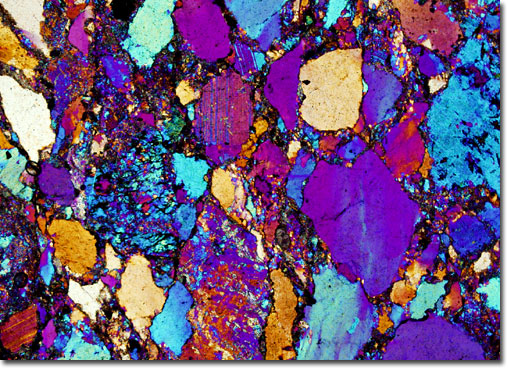|
Graywacke formation is associated with landslides that occur underwater, which carry fragmented rock, sand, silt, and other debris away from the continental periphery and into the deep waters of the ocean. Indeed, this rock type is particularly linked to subduction zones, where the collision of the oceanic and continental lithospheres results in frequent sediment release. Since in such unstable locations minerals, rocks, and other particles do not have much time to sort themselves out before they accumulate, when graywacke is formed from the materials, they seem to be mixed haphazardly throughout the rock, which has resulted in its alternate name, dirty sandstone.
|
